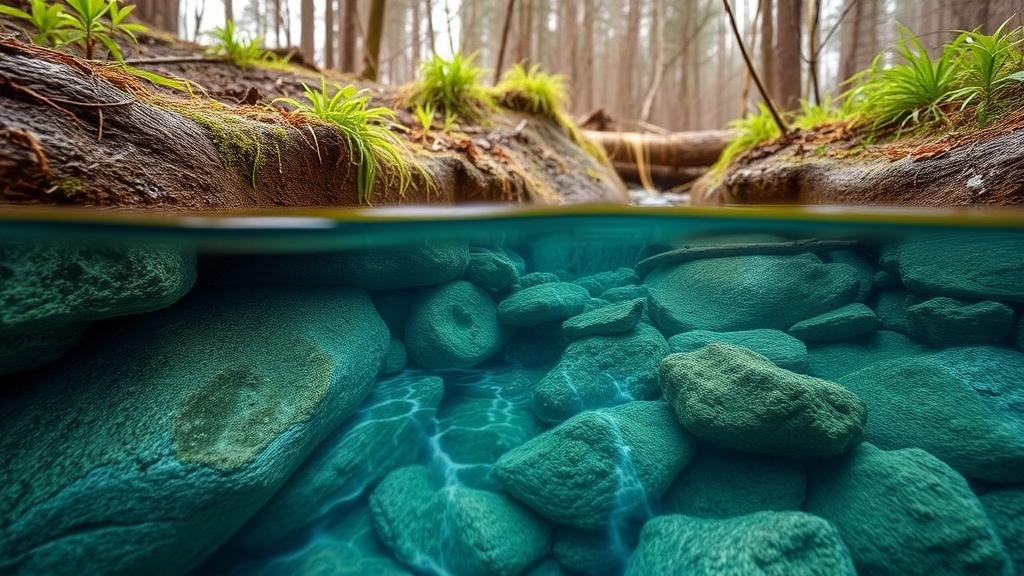Using Underground Water Sources to Detect Nearby Silver Veins
Using Underground Water Sources to Detect Nearby Silver Veins
The exploration of mineral resources, particularly silver, has led prospectors to innovate methods for locating potential deposits. One lesser-known technique involves analyzing underground water sources. This article delves into the relationship between water sources and silver veins, outlining methods of detection and providing real-world applications.
The Science Behind Water and Mineral Deposits
Water plays a crucial role in the geological processes that lead to the formation of mineral veins. Silver, often found in hydrothermal veins, is typically deposited through the movement of hot, mineral-laden water through rock formations. Understanding how these processes work is essential for utilizing water sources in mineral exploration.
As water circulates through the earths crust, it interacts with various minerals, including silver sulfide, leading to the precipitation of silver in specific locations. So, areas with significant groundwater flow may indicate the proximity of a silver vein.
Detection Methods
Several methodologies can be employed to use underground water for silver vein detection:
- Isotope Analysis: Analyzing the isotopic composition of water can reveal information about the sources of that water, including potential mineral contents. For example, a high concentration of sulfur isotopes may suggest the nearby presence of sulfide minerals, which can include silver.
- Geochemical Sampling: Collecting water samples and testing for metal concentrations can directly indicate the presence of silver in nearby geological formations. When water from a specific area shows elevated levels of silver or associated metals (like lead and zinc), it serves as a strong indicator of an underlying silver vein.
- Hydrological Mapping: Understanding the flow patterns of groundwater can help in identifying areas where silver deposits are more likely to reside. Map production based on hydrological data can point to potential zones for further exploration.
Case Study: Successful Applications
Regions with historical silver mining, such as the Silver Valley in Idaho, illustrate successful applications of this technique. In this area, geologists studied the local groundwater and discovered an elevated concentration of silver and other trace minerals. Subsequent mining operations focused on these hydrologically rich zones, yielding substantial silver production. The approach not only increased efficiency but also reduced exploratory drilling costs.
Another example can be found in Mexicos Sierra Madre Occidental. Here, groundwater sampling led to the discovery of previously unknown silver veins, opening up new mining operations. The integration of hydrological studies and modern geochemical analysis in this region underscores the potential of combining water analysis with traditional prospecting techniques.
Challenges and Considerations
While using underground water sources to detect silver veins offers promising avenues, several challenges must be considered:
- Contamination: Water sources may be contaminated by nearby mining activities or other anthropogenic influences, leading to skewed results in geochemical analyses.
- Geological Variability: The geological characteristics of an area can greatly affect water flow and mineral deposition, requiring a thorough understanding of local geology before making assumptions based solely on water data.
- Cost of Analysis: Advanced techniques such as isotope analysis can be costly and may require specialized equipment and expertise.
Actionable Takeaways
In summary, utilizing underground water sources for detecting nearby silver veins can be a beneficial technique in mineral exploration. Here are actionable takeaways for prospectors:
- Conduct thorough hydrological mapping in unexplored areas to identify potential water-rich zones.
- Incorporate geochemical analysis of water samples into exploration plans to detect anomalies in metal concentrations.
- Collaborate with geologists and hydrologists to integrate water analysis with traditional mining methods for optimal results.
By leveraging the relationship between underground water and silver vein deposits, prospectors can enhance their chances of discovering valuable silver resources efficiently and effectively.


